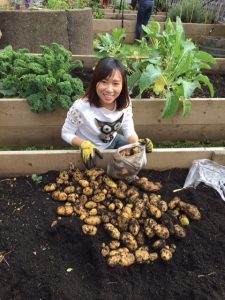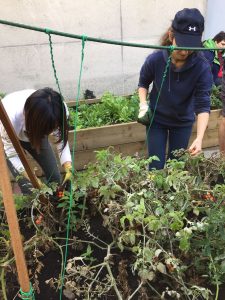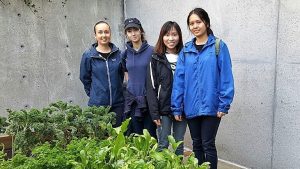Have you ever experienced conflict with project group members?
Throughout the first six weeks of this project, our group has come together to accomplish a variety of different tasks, made possible only through a team effort. Although factors such as time and motivation play a part, Although our group has faced a number of challenging obstacles which have had a detrimental effect on our motivation, we continue to strive for perfection. We invite you to continue reading our blog which ventures through our struggles leading to success. If you are interesting in learning more about our project’s objectives and achievements, and our approach towards solving group miscommunication and conflict, we invite you to continue reading our blog. We believe that our reflection will provide valuble insight into problem solving and collaborative group work, which may benefit your current or future project group!
Project Proposal
The project proposal can be accessed through the following link:
lfs350_group14_projectproposal_urbanfarmhands101
Our project proposal summarizes the Urban Farm Hands 101’s aim, objectives, inquiry questions and methods, alongside a brief introduction of our community partner, the Gordon Neighbourhood House. The proposal also provides readers with our reason for choosing this project and a succinct summary of the importance of urban agriculture.


Weekly Objectives and Achievements
Week 1 – (Sept 11-17th)
Objectives:
- To become more familiar with our community partner and their project goals.
- To set terms of reference for group work through the development of a team charter
- To identify and articulate elements of professional conduct to prepare for engaging with community partner
- To present 5 top strengths from the Strength’s Finder Assessment in LFS 250
Achievements:
Throughout this week, our group began researching our assigned community partner, the Gordon Neighbourhood House, to develop a more profound understanding of their initiatives, philosophy and history. During tutorial, we decided to visit the Gordon Neighbourhood House website and the Connect page summarizing the Urban Farm Hands 101 Project. Given the time constraints, each member of our project group was unable to present his/her 5 Top Strengths from the Strength Finder Assessment; however, as a group, we were able to develop a team charter and discuss the various elements of professional conduct. These include a brainstorm of the most efficient ways to function as a team.
Week 2 – (Sept 18-24th)
Objectives:
- To collaboratively work on the Urban Farm Hands 101 Blog post
- To discuss the monthly availability of each group member
- To contact the Gordon Neighbourhood House (GNH) in the interest of scheduling a meeting
Achievements:
In accordance with the plan, each group member contributed his/her time and effort towards the completion of the blog post. Alongside this project, each group member also effectively communicated his/her monthly availability via email and social media. With the aid of our Teaching Assistant (TA), we were able to meet with the Gordon Neighbourhood House on the 21st of September and familiarize ourselves with the organization.
Week 3 – (Sept 25 – Oct 1rst)
Objectives:
- To discuss and develop an initial draft of the project proposal, section by section
- To delegate project responsibilities for each group member
Achievements:
During the tutorial session, the group worked collectively to develop the initial structure of the proposal by generating ideas on what components and ideas should be incorporated. Before class dismissal, each member was given a task to complete for the following week.
Week 4 – (Oct 2nd – 8th)
Objectives:
- To individually complete the assigned tasks for the project proposal
- To edit and proof-read the proposal as a group
- To meet with the Gordon Neighbour House to discuss the crop plan and provide assistance in harvesting, seeding and ploughing the plots
- To learn about the characteristics of urban farming from our community partner and the long-term volunteers at GNH
- To make and record site-specific observations
Achievements:
Throughout the week, each individual completed his/her assigned task for the proposal. Subsequently, the group collectively edited the project on a Google document. Following the completion of the project, each member gave their approval before submitting the report. On the 7th of October, four of the group members visited the Gordon Neighbourhood House where the Head Farmer introduced the students to two urban gardens. Here we were given a chance to harvest a variety of different vegetables, make observations regarding the specific sites and learn about some aspects of urban farming. In the end, the Head Farmer introduced the group members to their current crop plan and explained the type of modifications that she expects from the students.
Week 5 + 6 (Oct 9th – 22th)
Upcoming Objectives:
- To schedule dates to meet with the Gordon Neighbourhood House
- To assist our community partner with the routine farming tasks such as weeding, planting, and winterizing the gardens on a weekly basis.
- To collect observations about the specific characteristics (soil texture, microclimate, pest and weed pressure, etc) of each urban garden site
- To utilize our recorded observations for the creation of a crop plan
- To acquire the Head Farmer’s consent
- To interview our program coordinator in order to acquire site-specific data that would otherwise have not been collected by observations
- To conduct further literature reviews in an effort to learn how the existing crop plan can be improved.
Achievements + Future Strategies:
On October 9th, our group has successfully submitted the project proposal on the Connect website. Furthermore, we have scheduled times to meet with our community partner over the course of the next two weeks. During these two weeks, we hope to acquire the Head Farmer’s consent to provide our assistance in the gardens, to collect further observations and to interview the project coordinator. We plan to achieve this by providing the Head Farmer with a Consent Form, by scheduling an interview date and by simply being active helpers and listeners. Following the submission of the project proposal, a number of group members have began to conduct literature reviews on the benefits and ways to improve the productivity of urban gardens. By utilizing our observations from the previous week, we hope to begin to brainstorm for a draft crop plan in the near future. Lastly, we hope that our future encounters with the Gordon Neighbourhood House will allow us to learn about the existing garden strategies that are being put to use, for example, the Nicola Place Farm’s surrounding concrete walls create an ideal place for growing plants that are less resistant to cold temperatures.
Week 7 (Oct 23 – 29th)
Upcoming Objectives:
- To summarize the recorded observations for each urban garden site
- To collectively work on a crop plan that will suit the needs of the Gordon Neighbourhood House
Future Strategies:
Each group member will study the acquired results and contribute to the crop plan by referring to his/her notes from past literature reviews. The best ideas will be summarized and presented to the Head Farmer for feedback. Subsequently, the crop plan will be revised and improved to suit the needs of the Gordon Neighbourhood House.

Our Reflections
What?
On October 7th, our group members were given the opportunity to engage in the regular maintenance of two community garden sites: Crystal Court and Nicola Place. During this time, we were instructed by the Head Farmer to plant seeds, harvest produce and clean-up the general area. While doing so, we have accomplished a number of important initial steps of our project; however, the distribution of effort was uneven. Attributable to the work imbalance, a number of group members felt discontented and attempted to re-assign the responsibilities. While trying to achieve equal task distribution, it evoked emotions of irritation and frustration.
So What?
Due to some group member’s lack of active participation, the communication within the group became less efficient. Although the group environment remained respectful at all times, it limited the sharing of knowledge, ideas and opinions. Resultantly, this lack of communication could potentially lead to lower levels of productivity and engagement (Lesmeister, 2009). In addition, the group’s creativity, confidence and overall satisfaction would be hindered (Levi, 2001). While a number of members attempted to re-distribute the duties, it would have been more appropriate to set a time aside to develop ground rules for constructive commitment (Huan & Yazdanifard, 2012). Currently, all members have been informed of the situation and are trying to resolve it through group discussions.
Now What?
For the prevention for future conflicts, individual group members will share equal responsibilities by completing tasks of similar difficulty and providing constructive feed-back regarding each other’s performance. To improve this process, our group plans to introduce a chairperson to delegate the tasks and encourage cooperation throughout the term. In doing so, this will build in-group relationships based on trust and respect (Huan & Yazdanifard, 2012). Furthermore, our group has come to appreciate and value “messy problems,” such as work imbalances, after watching Tim Harford’s TedTalk. We learned to welcome challenges and view seemingly unnecessary hurdles as important vehicles for creativity, inspiration and determination (TED, 2016). Lastly, we have collectively decided to apply Gary Klein’s “pre-mortem” to identify factors which may lead to our project failure (Cohn, 2015). In doing so, our group hopes to travel on the correct pathway towards success.
Concluding Remarks
Group work provides a variety of different benefits such as active learning, participation and interaction among peers. When students come together to complete a project, each individual also becomes exposed to diverse perspectives, a pool of knowledge and opportunities to gain a better understanding of classroom topics and discussions. Albiet its many advantages, group work is often viewed as a major source of stress due to conflicting opinions and schedules among the members. Consequently, it is crucial to address arising problems as early as possible and to estalish dynamic group communication. To prevent future clashes, it would be wise to select a group member to become chairperson to equally distribute the responsibilities, and to encourage active participation. With regards to our project, our group will begin developing a crop plan and a strategy for successful project completion this week. The strategic details of our assignment will be provided on our next blog post!
References:
Cohn, G. (2015, May 20). Failure Is Your Friend. [Audio Podcast]. Retrieved from http://freakonomics.com/podcast/failure-is-your-friend-a-freakonomics-radio-rebroadcast/
Huan, I & Yazdanifard, R. (2012). The Difference of Conflict Management Styles and Conflict Resolution in Workplace. Business & Entrepreneurship Journal, 1(1), 141-155.
TED. (2016). How messy problems can inspire creativity. [Video File]. Retrieved from https://www.youtube.com/watch?v=Jd_j_kw_jZQ